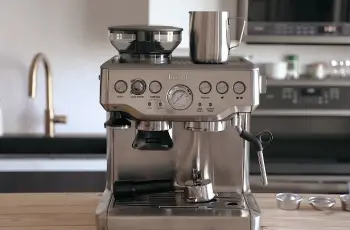When hot water is mixed with coffee and flows through the coffee grounds, the filter captures the essence, allowing it to fill your cup or pot with rich-flavored coffee while ensuring the grounds are kept out. This morning ritual is something we often don’t give much thought to, yet, it has made me consider the diverse array of coffee filter styles and if they significantly affect the coffee’s quality.
How Do Espresso Filters Work
The reason for an espresso channel is genuinely direct: after the high temp water has boiled up the character mixtures of the espresso beans, and assimilated their taste, shading, and smell, the channel isolates this fluid from the grounds. This channel is frequently (however not generally) made of dispensable paper—slight and permeable enough to permit fluid through, yet not the little grains of espresso. A filter traps the grounds and different particles that you would prefer not to drink. The filter you pick impacts what gets into the espresso and what stays out.
What Are Espresso Filters Made Of
Similarly as the sort of espresso bean impacts flavour, so does the filter material. The most widely recognized espresso filter types are paper, metal, and fabric.
Paper Coffee Filters
Paper espresso filters are perhaps the most ordinarily accessible filter. You can undoubtedly think that they are in any supermarket. They are utilized in dribble espresso producers and are both profoundly permeable and firmly woven, eliminating most of the overabundance of oils and justification for a cleaner fluid. Without these particles, espresso might appear to be more acidic.
Paper espresso filters are normally accessible in a cone shape or a bushel shape, and in various sizes for similarity with your espresso creator.
Step By Step Instructions To Utilize A Paper Espresso Filter
There are multiple approaches to utilize a paper espresso filter, contingent upon the preparing strategy. Utilizing a paper espresso filter with an espresso producer is the most widespread technique. These apparatuses are generally moderate and discovered effectively in many stores.
In the wake of setting up the espresso producer, you top off the water tank and addition the paper sift into the compartment. Then, at that point, measure out the ideal amount of espresso and empty the grounds into the channel. Supplant the compartment and turn on the espresso producer to brew.
Different techniques use paper espresso channels too, for example, pour-over. This strategy requires a cone filter and a cone. You start by heating the water to the point of boiling independently. Spot the paper channel inside the cone and soak it with high temp water.
Spot the cone on a pot or cup, measure the espresso beans into the channel, and pour in the water, permitting water to remove compounds from the coffee beans as it goes through and arises into the pot or cup.
Metal Espresso Channels
Metal espresso filters give an alternate encounter from paper filters. The lattice unavoidably has bigger pores, so it doesn’t obstruct as a large part of the regular oils or little grounds of espresso. Indeed, even the best metal espresso filter will permit a few particles and build-up through, yet that is not something terrible. The espresso channel pore size is as yet small, which makes the particles scarcely observable.
The Most Effective Method To Clean A Metal Coffee Filter
Metal espresso filters can be precarious to clean. When cleaning espresso channels, you ought to think about both everyday upkeep and month to month profound cleaning. Consistently, old coffee beans should be thrown into the trash or fertilizer heap, and the channel should be washed with cleanser and water. In case any grounds stall out in the channel openings, they ought to be cleared out or culled out.
Cloth Espresso Filters
The most un-normal espresso channel material is fabric, albeit these channels have a lot of advantages. Like paper channels, cloth filters work hard to catch all the espresso beans.
In any case, likewise, with a metal channel, you get every one of the oils that add to the espresso’s character. By fermenting espresso with this material, you get a rich cup that contains no unpalatable grains or particles.
While fabric can give a decent centre ground among paper and metal channels, upkeep is a task. Between each blend, these channels should be washed, yet you shouldn’t allow them to turn out to be excessively dry or excessively damp.
Typically, cloth channels keep going for around 30 brews before the miniature grounds and oil begin to saturate the flavour of the espresso. Notwithstanding, they can be utilized for around 100 mixes securely.
Conclusion
There are multiple types of coffee filters available in the market. It most likely depends on the user’s preference of which coffee filter they want to use. The type of coffee filter they use also depends on the coffee maker they possess.


